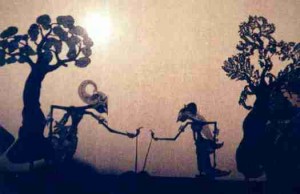
Wayang kulit is one of the most striking among Malay theatrical forms. In a wayang kulit performance, flat cut-out figures are silhouetted against a translucent, white screen, with a coconut-husk lamp as its source of light. The Indonesian word ‘wayang’ is derived from a word meaning ‘shadow’ or ‘ghost’.
The many stories in wayang kulit wide repertoire are drawn from Hindu epics like the Ramayana, as well as legends and tales of folk hereoes. Over the years, the stories have been adapted and changed to suit local preferences.
Apart from the musicians in the supporting orchestra, the traditional wayang kulit is practically a one-man show. Traditionally, the dalang, the artist who creates the puppets, has several other roles in the show. He is the puppeteer, narrator and the sound effects producer, and as if that wasn’t enough, he had direct the orchestra as well. A good dalang is also able to improvise to interact and joke with his audience, make social and even political commentary, pass on traditions and culture, and teach morals and philosophy.
On special occasions like weddings and religious holidays, the wayang kulit is performed all through the night. There is a special performance in Bali which takes place in the day without a screen, held before a cremation ceremony.
The music in a wayang kulit performance helps to make the story more interesting and entertaining. There are normally 12 musial instruments, of which the most important is the serunai.

 December 5th, 2012
December 5th, 2012 
 Posted in
Posted in  Tags:
Tags: